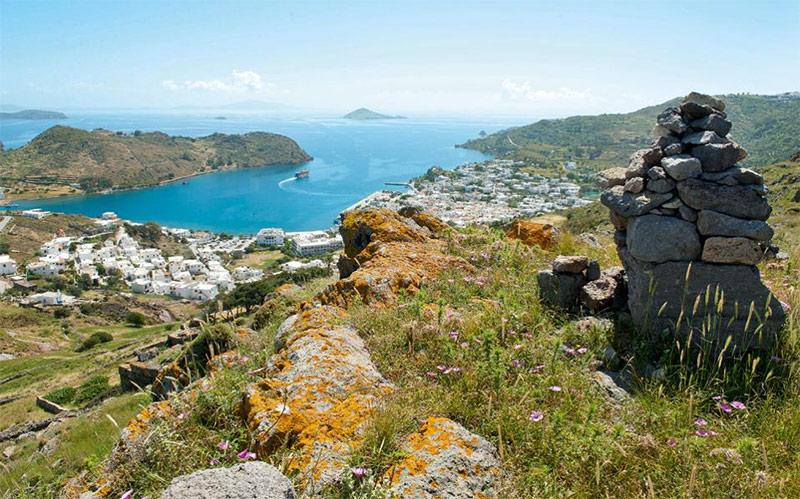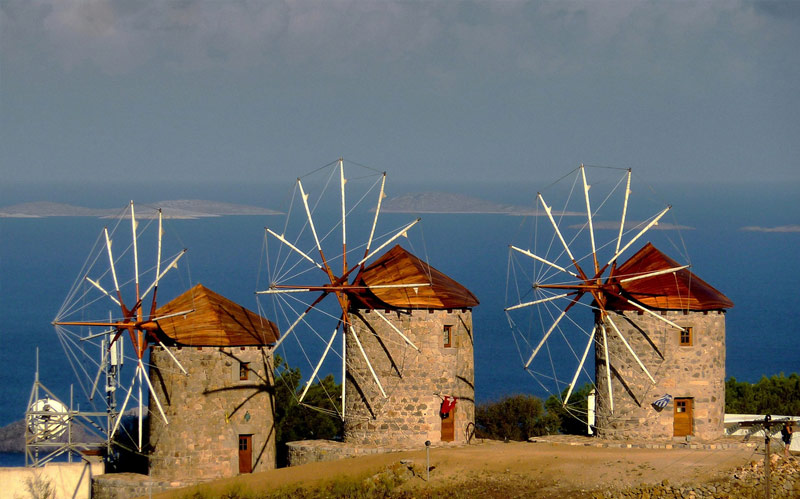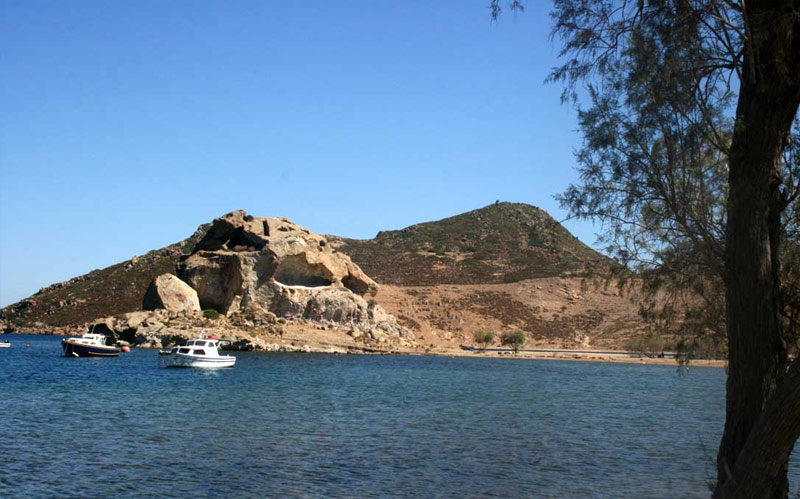
THE CAVE OF APOCALYPSE
According to the Christian tradition, Patmos is one of the two places in the world that heard the voice of God. More specifically, in the "Sacred Cave of Apocalypse," which still exists today, the Evangelist John spoke with God and he recited the sacred book of Revelation, which John recorded with the help of the student of Prochorus. This book has caused admiration and awe among Christian believers, who consider it prophetic and come from the ends of the world to visit and worship this place.
Patmos is a place blessed by God with remarkable natural beauty and a rich cultural and mainly religious heritage. It is a spiritual beacon that radiates to the ends of the world, inviting the faithful to come to experience its unique divine and mystical aura.
 KASTELLI ARCHEOLOGICAL SITE A natural fortified hill, Kastelli rises to the west of Skala and north of Chora and offers unobstructed views of three bays: Skala (east), Chochlaka (southwest) and Merika (to the north) while the islands of Naxos and Ikaria, factors that explain the choice of location by the ancient inhabitants of the island to build their acropolis. Today, in Kastelli are preserved remarkable remains of fortifications dating back to the end of the classical period (end of the 4th century BC), which are visible when climbing from Skala. From the wall, significant parts of the fortification enclosure, as well as rectangular towers, with the ruins of the southeast tower reach 3.5 meters, and the northwestern tower (slightly higher than the small church of St. Constantine, and which appears to be independent of the main fortification) the entrance gate with the six-step staircase is preserved. |
 THE WINDMILLS Built to the east of the Holy Monastery of Patmos, at the top of a hill overlooking the sea, the three windmills of Chora gave their name to the neighboring district of Mylon and since their restoration in 2010, they constitute an extra jewel of the island. The windmills (two of which date back to 1588, and the third one built in 1863) fell into disuse in the late 1950s, when industrial mills replaced traditional production as you did across Europe, the mills were deserted. Today, the first mill is reopened as a flour mill, with the ultimate goal not only to provide its visitors with the image of traditional flour production technology, but also to help revive the traditional flour and baker's professions and to produce truly alot products. The second windmill, thanks to the replacement of the millstone by a generator and the mounting of a metal rolling beam for the impeller with a mechanical brake, is able to generate electricity from wind energy. Finally, the plan for the third windmill is water production. |
 KALLIKATSOU STONE According to the legend, the Stone of Kallikatos is nothing more than the curse of a mother who (literally) caught a place: enticed by the beautiful sea of the bay, and while she had just communed, a girl wanted to dive into her waters. Her mother banned her, she insisted, however, causing the anger of the former. She shouted, "If you go, you become a stone." Geologically, the rock of Kallikatos is a volcanic litotype from the time of volcanic activity in the region (four million years ago), formed by the welding of many volcanic filaments, and its shape derives from the way of connecting the materials of the basaltic lava from which came from. |
